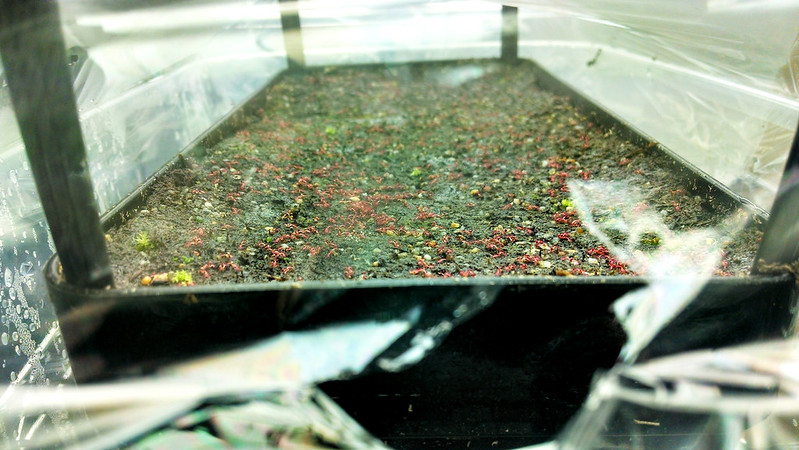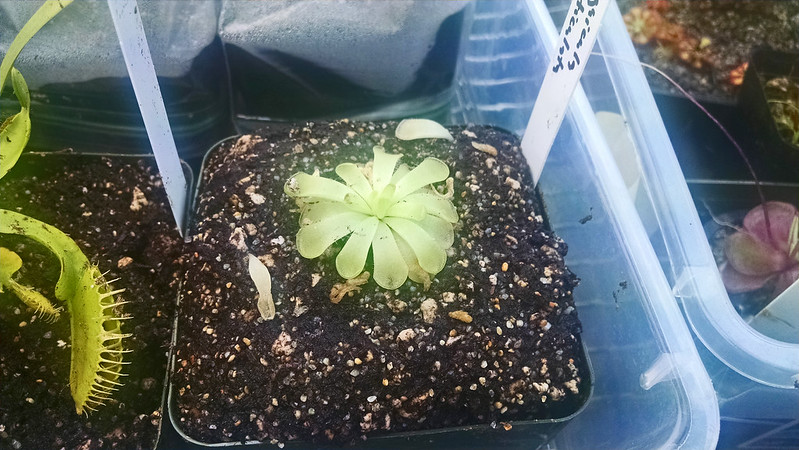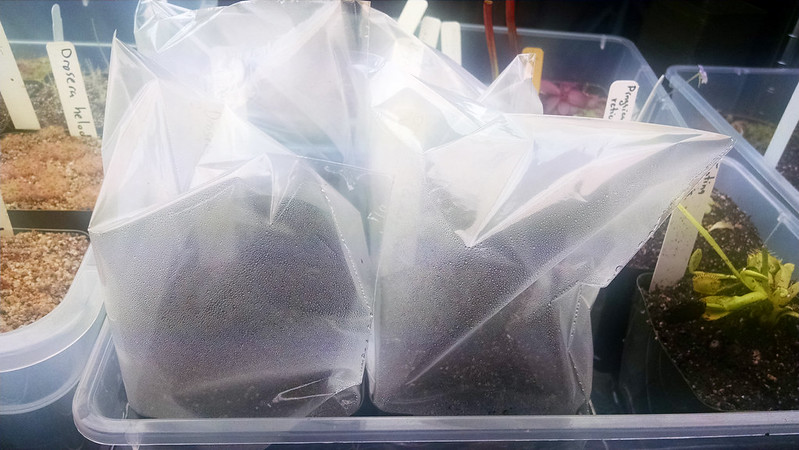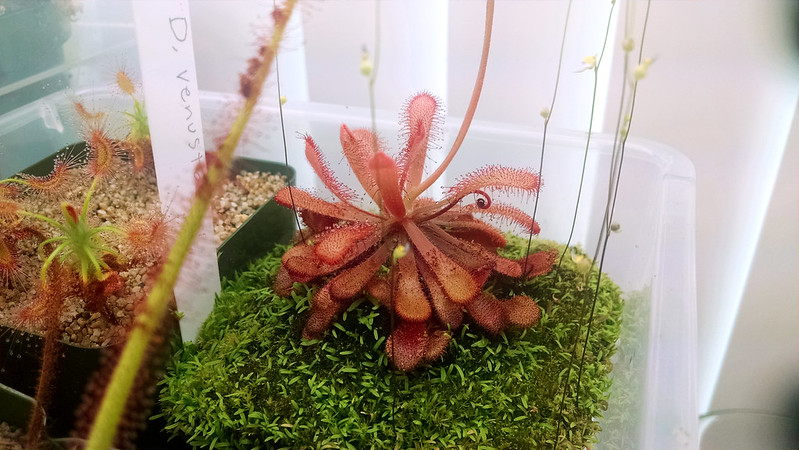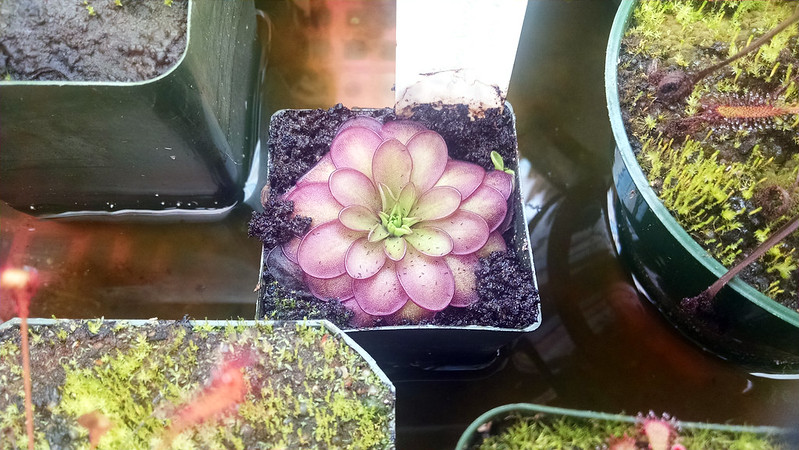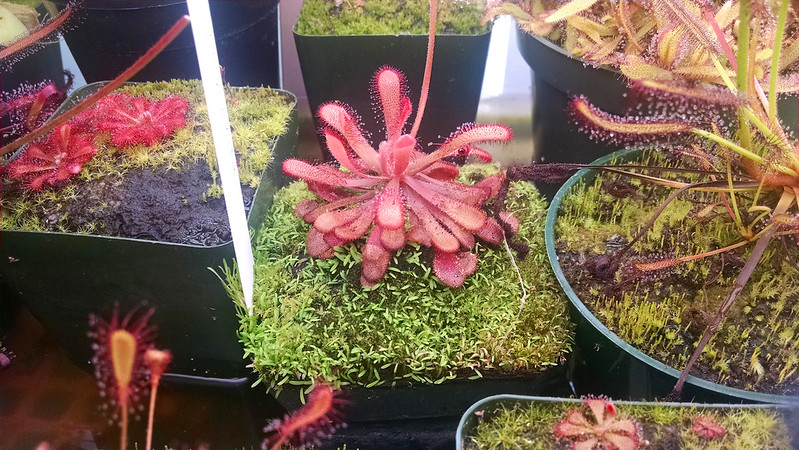This
is part of a series of posts describing various aspects of cultivation,
which will hopefully be useful to new growers trying to solve the
challenges of growing carnivores, and experienced growers who are always
looking to improve their collection. The full series can be read here, or by topic on the Series page.
Trading is an essential part of the carnivorous plant hobby. There are only a handful (maybe a dozen) sundew species/cultivars that are consistently available to buy anywhere (online or at nurseries). Nepenthes and Sarracenia are a bit easier to find, if significantly more expensive. Pinguicula are difficult and Utricularia extremely difficult to find for sale, outside of one of two beginner varieties.
So basically once you start trying to expand your collection you're going to have to start trading. At first it can be intimidating – beginners don't have much trading stock, shipping plants bare root seems risky, and the plants you receive in the mail usually look all ratty. Luckily, it's much easier than it seems.
I just completed a trade with a poster on
Terra Forums who was initially looking for some
Utricularia graminifolia (I've had a pot for a while, though I haven't posted much about it). In order to make everything worthwhile, we wound up with me sending some
U. graminifolia,
Drosera prolifera,
Drosera filiformis Florida Red, and
Drosera capensis 'Albino' and receiving
Drosera affinis,
Pinguicula 1717,
Drosera capensis Bainskloof leaf cuttings, and seeds of
Drosera sessilifolia and
Drosera burmannii Giant Red (Hann River, Kimberley, WA, Australia). This was a very exciting trade for me, since I've been looking for
D. capensis Bainskloof and
D. sessilifolia for some time.
First up, sending plants. Sundews should be shipped bare root, with as much media rinsed off the roots as possible (this helps prevent accidentally spreading weeds or pests). These should then be wrapped in a portion of wet long-fiber sphagnum, and wrapped again in a damp paper towel. This can be placed in a plastic baggie. See below
 |
| D. prolifera plantlet, off to a new home. |
 |
| D. capensis 'Albino' is the largest plant I shipped today. |
 |
| Once again, D. filiformis Florida Red proves to be popular trading material. |
For terrestrial Utricularia it's a little different. In their case, just dig out a plug of plants and media from your pot, and wrap it in a damp paper towel to hold it together. Then, into the baggie.
 |
| This is about the size of the plug of U. graminifolia that I started with. |
 |
| All wrapped up safe. |
Make sure to label all your plants clearly with as much information as possible. Species, cultivar, location data, etc. are all important pieces of information for the future owner. Once you've done that, it's time to pack up and ship.
I use the USPS small flat-rate Priority mail boxes.
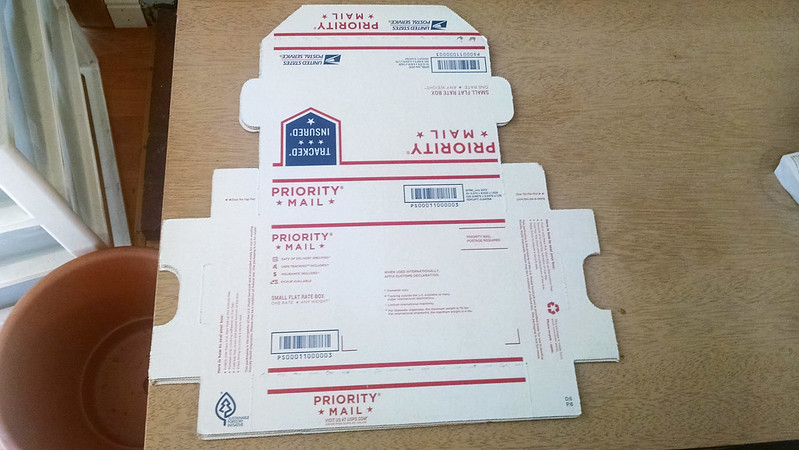 |
| Non-flat rate boxes can be affordable, but they're less predictable. |
The boxes themselves are free, and shipping is only $5.80 for guaranteed 3-day delivery. That's about the sweet spot for shipping plants – anything quicker is exorbitantly expensive, and going cheaper puts the plants at risk with long shipping times. I find I can usually fit 3-4 smaller-sized plants in one box. If I were shipping mature specimens of larger species I'd have to use a different container.
 |
| I like to cushion my boxes with dry paper towels if I don't have other packing materials. |
It's always best to ship at the beginning of the week, so that plants don't sit around in a post office over the weekend. Also keep the temperatures in mind – plants can be lost to freezing or baking hot weather on the receiving party's end.
When you receive plants in the mail, it's important to pot them up right away. They're probably stressed out from shipping, and getting them settled in quickly will make a big difference in how quickly they bounce back. It's good to have some media prepared in advance.
 |
| Looking forward to seeing this D. affinis get bigger. |
 |
| This media has a lot of perlite in it for these pings. |
One thing that I've come to find really helps my plants recover from any stressful situation, be it shipping or repotting or whatever, is much higher humidity. Therefore I now put a plastic baggie over the pots of my new acquisitions. This is also useful as insurance in case the plants you receive were accustomed to much higher humidity than your setup provides – the humidity tent allows them to be hardened off slowly, rather than potentially shocked to death.
 |
| I really like using humidity tents. |
Since I received 2 leaf cuttings of
D. capensis Bainskloof I decided to start one in water, and one on the media. This provides a bit of insurance in case one technique fails utterly.
 |
| I've not had much success with the water-float method and D. capensis previously, but maybe this time will be different. |
 |
| My fingers are seriously crossed for this leaf cutting. |
Finally, shipping seeds. Sundew seeds are tiny, sometimes hilariously tiny, which means shipping them safely can be a challenge. My personal favorite method is to
make seed packets out of parchment paper, and
envelopes out of printer paper. That way there is no tape or glue to catch the seeds, and the tension of multiple folds keeps the seeds well-contained. The fellow I traded with used pieces of rolled and then folded paper and tape that actually worked pretty well, but I still think the above method is the best I've seen.
 |
| Super pumped to be growing D. sessilifolia. Ever since I learned about its relationship with D. burmannii I've wanted some. |
 |
| This is a different locality than my D. burmannii Humpty Doo, but I suspect it will look fairly similar. |
Finally, remember to label your plants! Eventually you're going to reach a point where you no longer remember what's in each pot. Labeling will help you stay organized and make it much easier to trade in the future (nobody wants an unidentifiable mystery plant).
Happy trading.



